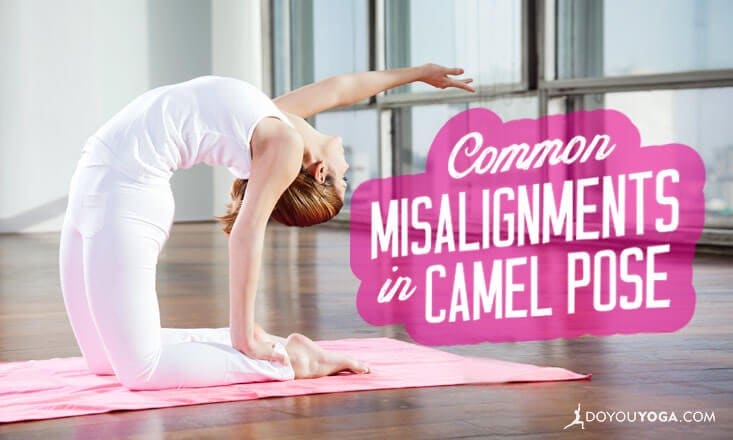Camel Pose, or Ustrasana, is an amazing heart opener and super deep backbend. It stretches the front of the body, from the thighs to the hip flexors, to the abdominals, to the pec muscles in the chest. It’s a fantastic way to work into the notoriously difficult-to-access-space between the shoulder blades and the thoracic spine.
It increases flexibility in the spine, stimulates the nervous system, opens the chest and shoulders, improves circulation and digestion, and stimulates the thyroid. It’s said to decrease fat on the thighs, rejuvenate/increase energy levels, and lower blood pressure.
Although at first a difficult pose physically and emotionally, Ustrasana is a wonderfully vulnerable posture that benefits the mind, body, and soul. While in the posture, your focus moves from the slight physical discomfort to slight emotional discomfort, and then into an intense emotional cleansing and mental clarity that emerges through perseverance.
With that said, this pose is divisive. Some yogis love it while others dread it. That could be because there are some common misalignments that might cause physical discomfort.
Check these out, and perhaps Camel will move from dreaded to beloved in your next yoga class.
Crunching the Lower Back
This is definitely one of the top misalignments in this pose. The goal of Camel Pose is to take the spine through its full range of motion from top to bottom. We often collapse into the lower back in this pose, which causes a lot of unnecessary pain and can do harm.
How to avoid it? Think about rooting your lower body down while simultaneously extending your upper body up, and then arch down. Picture two continental plates pulling away from one another. Your tailbone, hips, knees, shins, and ankles rooting into the earth while your ribs, shoulders, and chest reach up and away and then curve down to the ankles.
How do you know if you’re crunching the lower back? Take a look at your glutes. Are they relaxed or tightened? Are you clenching your bum? If the answer is yes to those questions, than you’re probably collapsing the lower back.
Hips Shifting Too Far Back or Too Far Forward
Another common cause for concern is when the hips are not in line with the knees. The reason for this is twofold.
Firstly, make sure your knees are spaced properly during setup. Secondly, when moving into the posture, keep the hips directly above the knees and internally rotate your inner thighs. This will prevent common misalignment number one, and will prevent lower back ache.
Since this is a common and easy misalignment, I like to consciously take my hips ever so slightly forward while I send my heart to the sky and arch into the posture. This works for me because my hips always want to creep back. So if you’re the same, try it and see if it helps you line them up perfectly with your knees so your foundation is solid.
Buddha Belly
With so much to think about in this pose, it’s easy to forget about the abdominals and let a soft belly stick out.
Instead, during the foundation or setup of the pose, engage your transverse abdominals by drawing the front of your hip bones together. This will protect your lower back as well.
Leading With Your Lower Back
In addition to crunching or collapsing the lower back, we often start the arch with our lower backs. Avoid this by consciously starting with your heart.
Once you’ve set up your lower body properly and you’re ready to begin the arch portion of the pose, bring your awareness to your heart/breastbone/sternum. I like to close my eyes and picture the movement I need to make first — take your sternum ever so slightly forward and then up to the sky. Begin the arch here.
As your spine flexibility increases, you can start to arch up even further and then back, eventually lightly resting your palms on your heels. Think about actively spreading your spine — sending the lower portion down toward the earth and working it in a lovely rainbow shape — your knees at one end, your heart at the top of the arch, and your hands at the other.
Hopefully these tips and tricks help your Ustrasana go from a dreaded few minutes in class to an energizing, cleansing, and loved posture in your teacher’s sequence. Be careful, and move gently. Make sure you listen to your body and don't push if there is any pain.
What part of this posture do you like to focus on? Any of the above? Or are there any other common misalignments in Camel Pose we’ve left out? Let us know in the comments below!


